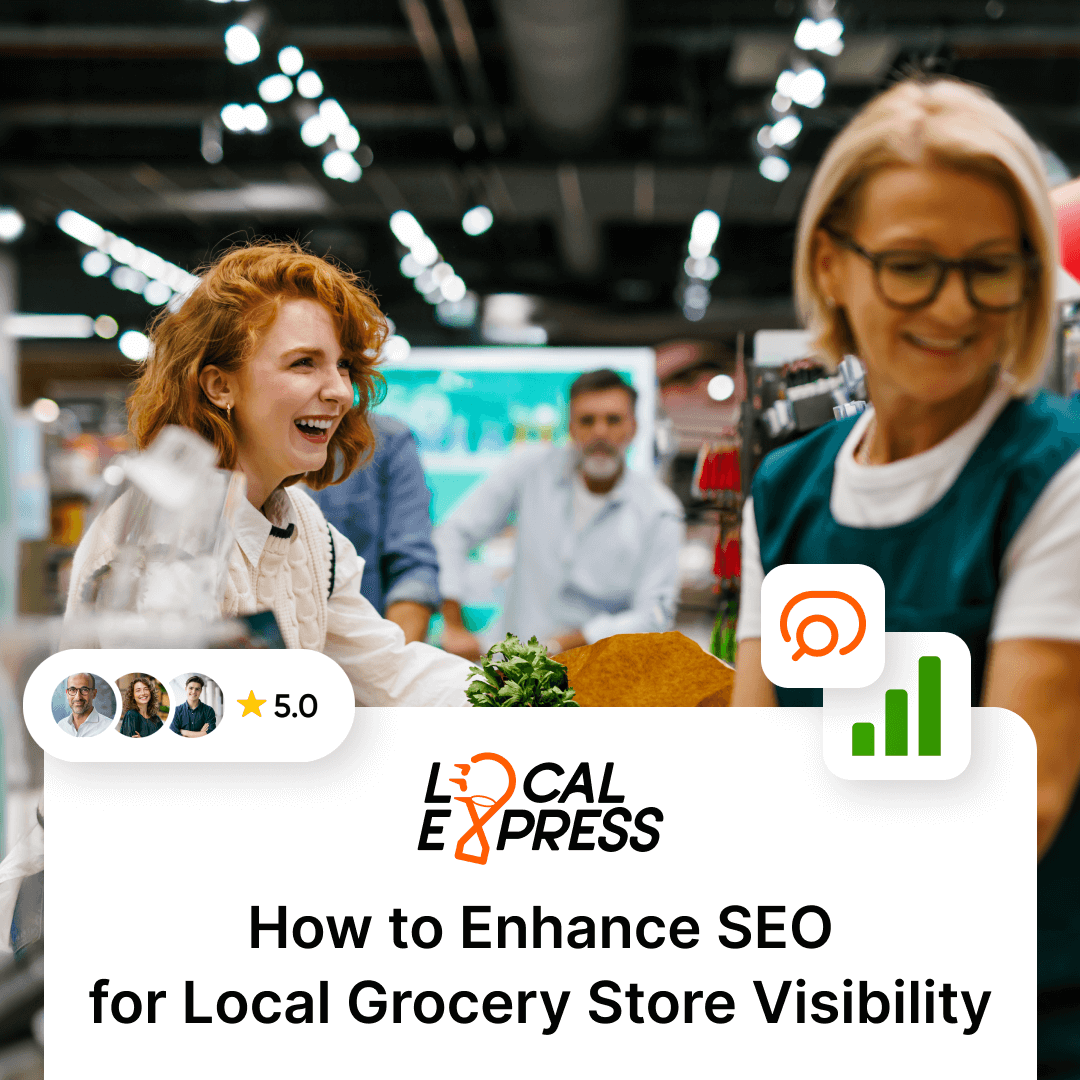


Local grocery stores lose thousands of potential customers to competitors every month simply because they're invisible in local search results. When over 30% of all mobile searches are related to location and 76% of people who search on their smartphones for something nearby visit a business within a day, poor local SEO literally drives customers to your competition's checkout lines. Modern unified ecommerce platforms combined with strategic local optimization can transform your store from search-invisible to neighborhood-dominant, capturing the growing wave of "near me" searches that drive immediate foot traffic and online orders.
Local SEO operates fundamentally differently from traditional search optimization. While general SEO aims for broad keyword rankings, local SEO targets customers within your specific service area—typically those who would realistically visit your physical store. Google determines local rankings through three primary factors: relevance (how well your profile matches the search), distance (proximity to the searcher), and prominence (your overall online reputation and presence).
The local pack—those three map-based results appearing at the top of search results—draws substantial attention and click activity, especially for high-intent local queries. Research shows that no single brand monopolizes these rankings, meaning any store, regardless of size, can compete when they focus on the right fundamentals.
Traditional SEO might target broad terms like "organic produce" nationally, while local SEO focuses on "organic grocery store in [your neighborhood]" or "supermarket near me." This geographic specificity means 76% of people who search on their smartphones for something nearby visit a store within one day, compared to minimal immediate action from broader searches.
Local search also heavily weighs user location and search intent. When someone searches "grocery store" on their phone while driving through your neighborhood, Google prioritizes nearby options over stores with better traditional SEO but farther locations.
Your Google Business Profile serves as the cornerstone of local visibility, functioning as the primary touchpoint between potential customers and your store. Enter complete data in your Business Profile to help Google match your business to relevant searches.
Start with absolute accuracy in your Name, Address, and Phone number (NAP) information. Even minor inconsistencies can confuse Google's algorithm and hurt rankings. Include:
Upload high-quality photos showcasing your produce section, prepared foods, store exterior, and interior aisles. Businesses that add photos to their Business Profiles receive 42% more requests for directions on Google Maps and 35% more clicks to their websites than businesses that don't.
Reviews significantly impact both rankings and conversions. Higher average ratings are correlated with better conversion. Implement these review management strategies:
Independent stores face unique challenges competing against chains with dedicated marketing teams. However, local community connections provide advantages that big-box stores can't replicate. Most high-performing brands have dedicated local marketing strategies, but yours doesn't need to be complex to be effective.
Research what your successful local competitors do well:
Use these insights to differentiate rather than copy. If competitors lack Spanish-language content but your neighborhood has Hispanic residents, that's your opportunity.
Local SEO improvements typically show results within 3-6 months with consistent effort. Set measurable targets:
Your website serves as the hub for all digital presence, requiring both technical optimization and local relevance. Even the best omnichannel ecommerce solutions need proper SEO configuration to maximize visibility.
Start with these non-negotiable technical requirements:
Every page needs local optimization elements:
Content marketing costs 62% less than traditional advertising while generating 3x more leads. For grocery stores, local-focused content builds community connections while improving search visibility.
Develop content that serves your specific community:
Publish consistently—even one quality post weekly compounds into significant SEO value over time.
Transform real-world relationships into digital visibility:
Independent grocers must decide between hiring professional help or managing SEO internally. Each approach has merit depending on your situation.
Consider agencies when:
DIY succeeds when:
Many stores find hybrid approaches work best—using tools for technical heavy-lifting while handling content and reviews internally.
With over 30% of all mobile searches related to location and most smartphone users conducting "near me" searches, mobile optimization isn't optional-it's survival.
"Near me" searches continue to grow, requiring specific optimization:
Voice queries are longer and more conversational, requiring natural language optimization:
Modern grocery shopping blends physical and digital experiences. Online accounts for roughly 12-13% of U.S. grocery spending, making ecommerce integration essential for local visibility.
Buy Online, Pickup In Store (BOPIS) searches have specific intent requiring targeted optimization:
Local product searches need special attention:
While mastering local SEO requires dedication, LocalExpress's AI-powered unified platform eliminates technical barriers that overwhelm independent grocers. Unlike generic website builders or basic ecommerce tools, LocalExpress specifically addresses the unique challenges food retailers face when competing for local search visibility.
LocalExpress enhances your local SEO through:
According to LocalExpress, its AI-powered fulfillment system processes orders up to 50% faster, creating the positive customer experiences that generate reviews—critical for local rankings. Plus, LocalExpress's last-mile delivery management defines precise service areas that strengthen location-based search relevance.
For grocers serious about local dominance without technical complexity, LocalExpress provides the unified foundation that makes advanced SEO accessible to stores of any size.
Most grocery stores see initial improvements within 3-6 months of consistent optimization efforts. Google Business Profile changes often show results within 2-4 weeks, including increased views and direction requests. However, competitive local pack rankings typically require 3-6 months of sustained effort. Review accumulation and response strategies show impact within 3-6 months as well. The key is consistency—stores that maintain daily GBP management and weekly content creation see steady growth, while sporadic efforts produce minimal results.
Google ranks local results based on relevance, distance, and prominence; distance/proximity is a key factor but not the only one. After proximity, Google Business Profile completeness and review quality have a great impact. Businesses that add photos to their Business Profiles receive 42% more requests for directions on Google Maps, while higher average ratings are correlated with better conversion. Focus first on perfecting your GBP listing before tackling website optimization or content creation.
Start with Google Business Profile optimization since it's free, faster to impact rankings, and BrightLocal's latest survey shows about 87% of consumers use Google for local business information. A complete, optimized GBP profile can generate results within weeks, while website SEO typically takes months. Once your GBP profile is fully optimized with photos, posts, and reviews, shift focus to your website. However, if you're implementing an omnichannel ecommerce solution, do both simultaneously since modern platforms include built-in SEO optimization.
Quality matters more than quantity for local citations. Focus on the major platforms first: Google Business Profile, Bing Places, Apple Maps, Yelp, and Facebook Business. Industry-specific directories and local chambers of commerce add value. Avoid low-quality directory farms that can actually hurt rankings. LocalExpress's unified platform helps maintain citation consistency by syncing store information across all digital channels automatically.
Many independent grocers successfully manage local SEO internally by dedicating 5-10 hours weekly to optimization efforts. Start with free resources like Google Business Profile and basic website optimization. If you're not seeing results after 3-6 months of consistent effort, consider professional help. Agencies charging $500-2,000 monthly can accelerate results, but modern tools like LocalExpress's AI grocery data fusion automate many technical SEO tasks, making DIY approaches more feasible for time-strapped store owners.

